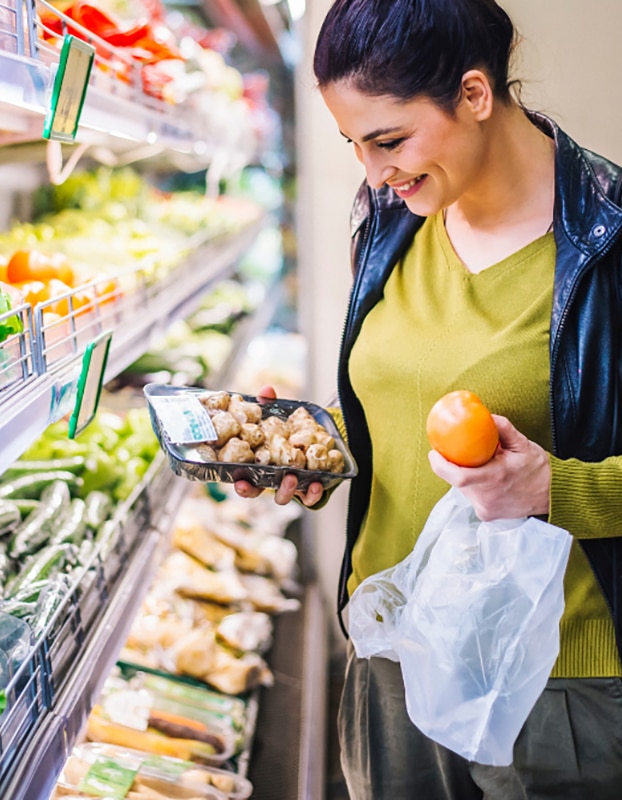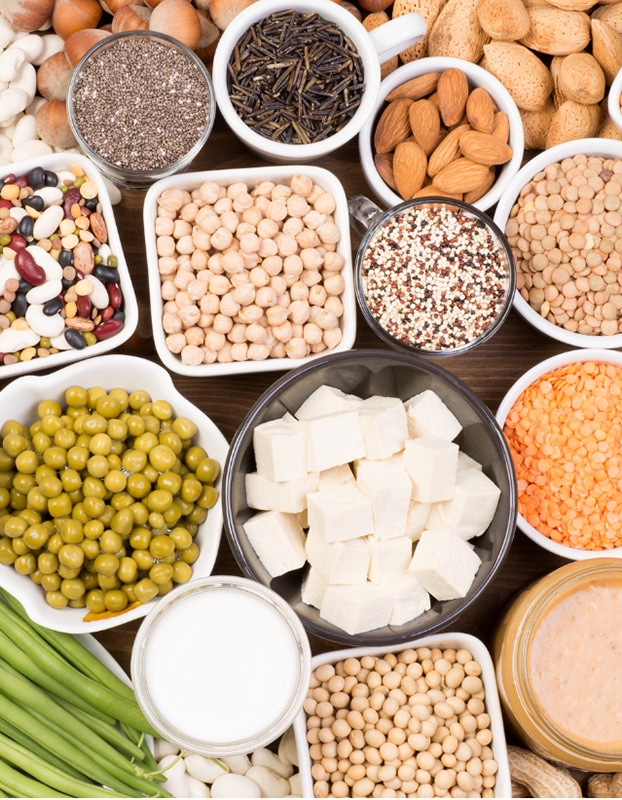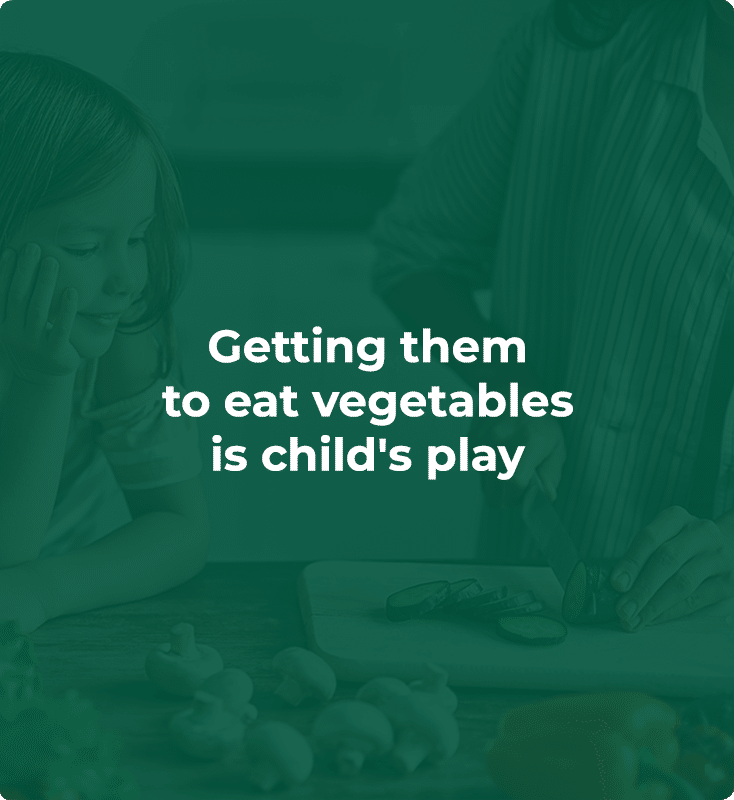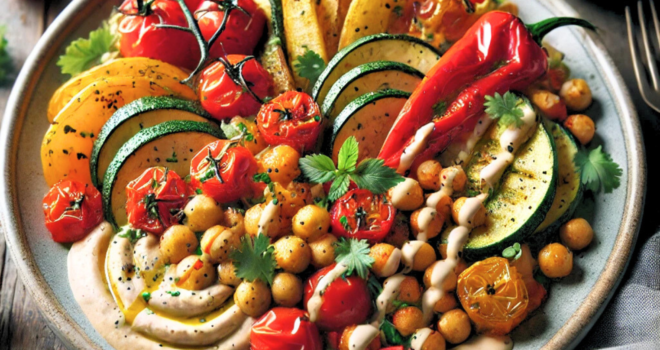The necessity of increasing the share of vegetables and legumes in our diet is now universally accepted—not only to improve our health but also to protect the planet and reduce our expenses. But where do you start? Here are some ideas to take the plunge at your own pace, without ever sacrificing flavor.
Step by Step
If you want to give more prominence to vegetables and legumes while still keeping meat on the menu, the simplest method is to serve larger portions of these items, which will automatically reduce the portions of meat or fish on your table. Also, don’t hesitate to subtly adjust the ratios in your recipes. A study conducted in the United States tested the partial substitution of meat with mushrooms in taco mixtures. The result: consumers appreciated a taco made with 100% beef just as much as one made with 50% beef and 50% mushrooms [1]. Partial replacement can be an initial step to gradually accustom your family’s palate to recipes with less meat.
Also, pay attention to seasoning. A study by Inrae (the French National Institute for Research in Agriculture, Food and the Environment) with 150 consumers shows that it is not the taste of the meat that whets the appetite but rather the aromas traditionally associated with it, such as the smell of Provence herbs [2]. Therefore, do not hesitate to explore the flavors of aromatic herbs and spices, true allies in increasing the plant-based portion of the diet. Several studies highlight the potential of herbs and spices to enhance the acceptability of dishes reformulated to be nutritionally healthier (lower in fats, salt, etc.) [3].
Read also :Long live fats, for delicious vegetables!
Revisiting the “Classics”
For those who want to go even further, there is no need to completely overhaul the family’s culinary habits: you can revisit your recipe book by giving vegetables or legumes a starring role. Vegetarian lasagna (made with spinach, zucchini, or eggplant depending on the season), chili sin carne (where the portion of red beans is increased to compensate for the absence of meat), shepherd’s pie where minced meat is replaced by a mixture of chopped vegetables (turnips, carrots, celery, mushrooms), vegetarian meatballs in sauce, 100% plant-based stuffed vegetables (the vegetable pulp can be mixed with starchy foods or, preferably, with stale bread to combat waste), or even fried vegetable sticks to replace chicken nuggets… recipes for vegetarian alternatives to classic dishes are widely shared online. So why not give it a try? With these keywords, you’ll find a multitude of recipes on the internet.
“Hidden” vegetables (and fruits!) in baking
Another tip, simpler than it seems: discreetly use fruits and vegetables in baking. While using fruits in baking is common, incorporating vegetables is more original. Several vegetables lend themselves particularly well to this due to their natural properties:
- Zucchini: It adds a soft, light texture to cakes, partially replacing flour and fats. Its high water content (about 95%) helps hydrate the batter, resulting in a moist cake. Similarly, a few spoonfuls of applesauce work wonders. Your children won’t notice if you replace the butter in their chocolate cake with finely grated zucchini, or in your king cake with applesauce.
- Beetroot: A source of natural sugars, it adds a subtle sweetness and a beautiful purple hue to desserts. The betalains, the pigments responsible for its color, are also powerful antioxidants.
- Squashes (pumpkin, butternut) and Carrots: Their sweet, creamy flesh adds tenderness and flavor to desserts (carrot and zucchini muffins, carrot pudding, carrot cake, etc.). Rich in antioxidants such as beta‑carotene, they lend a lovely orange color to the preparations.
Using vegetables in baking yields desserts that are lower in calories yet just as moist and tender.
A lire aussi : Envie d’en apprendre plus sur une alimentation plus durable ? Découvrez ici nos infographies !
Try Aquafaba
It is impossible to discuss ways to increase the share of legumes in our diet without mentioning aquafaba, the cooking liquid from chickpeas. Its secret? A long-lasting foaming ability that makes it an excellent substitute for egg whites in mousse-based recipes. Its stability over time (four times longer than egg whites!) is thought to be due to the presence of large molecules that increase viscosity and prevent the foam from breaking down [4]. An option to try when making a vegetable soufflé or a trendy chocolate mousse!
So, are you ready to embark on this adventure? Feel free to share your discoveries with us.
Sources:
[1] Guinard JX et al. (2016).
[2] INRAE – Viandes et légumineuses: des perceptions et des représentations.
[3] Petersen KS et al. (2024).
[4] Escadeillas M et al. (2020).



 Lentils
Lentils  Garlic
Garlic  Vegetable growing: Brussels sprout
Vegetable growing: Brussels sprout 









